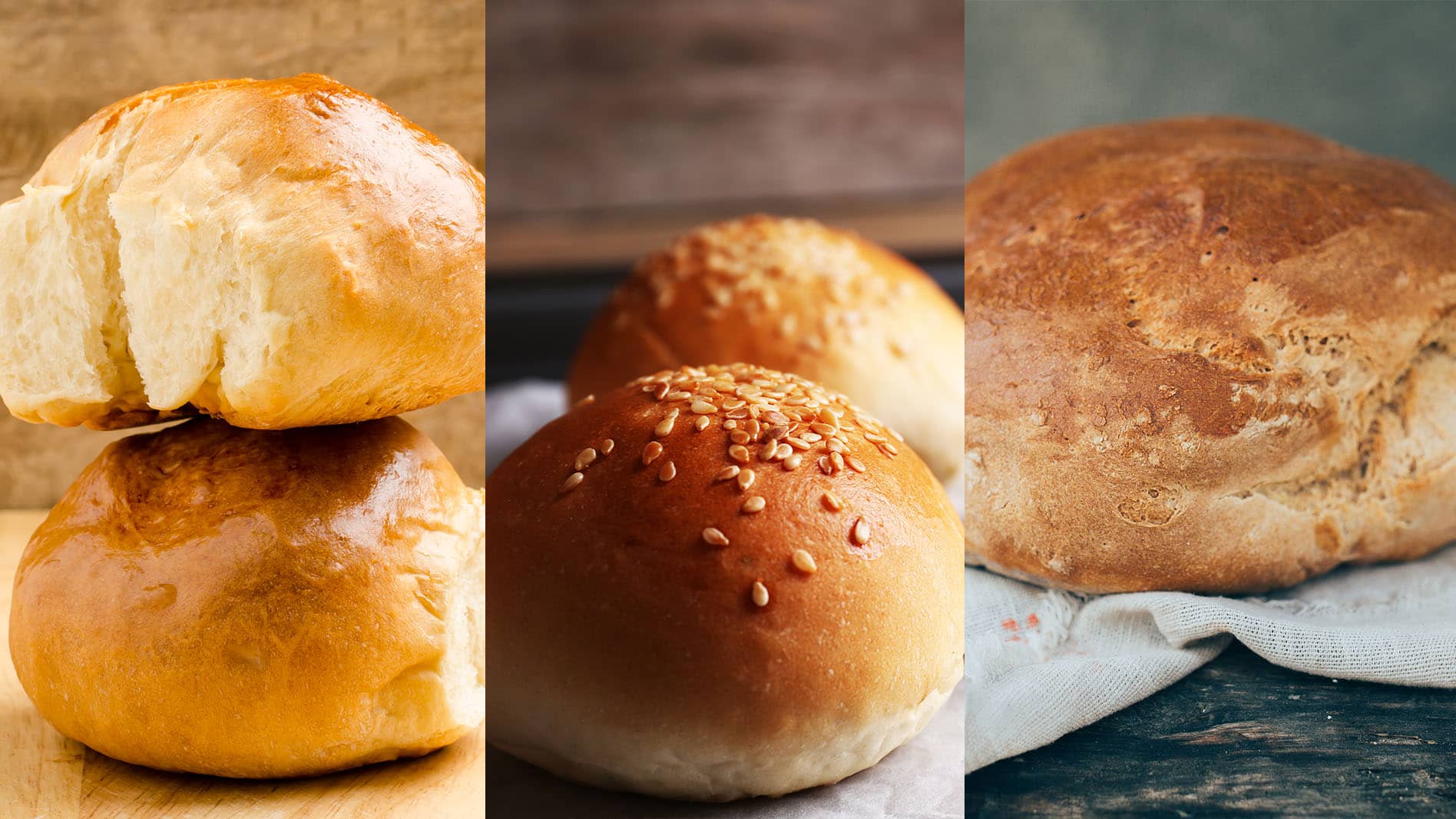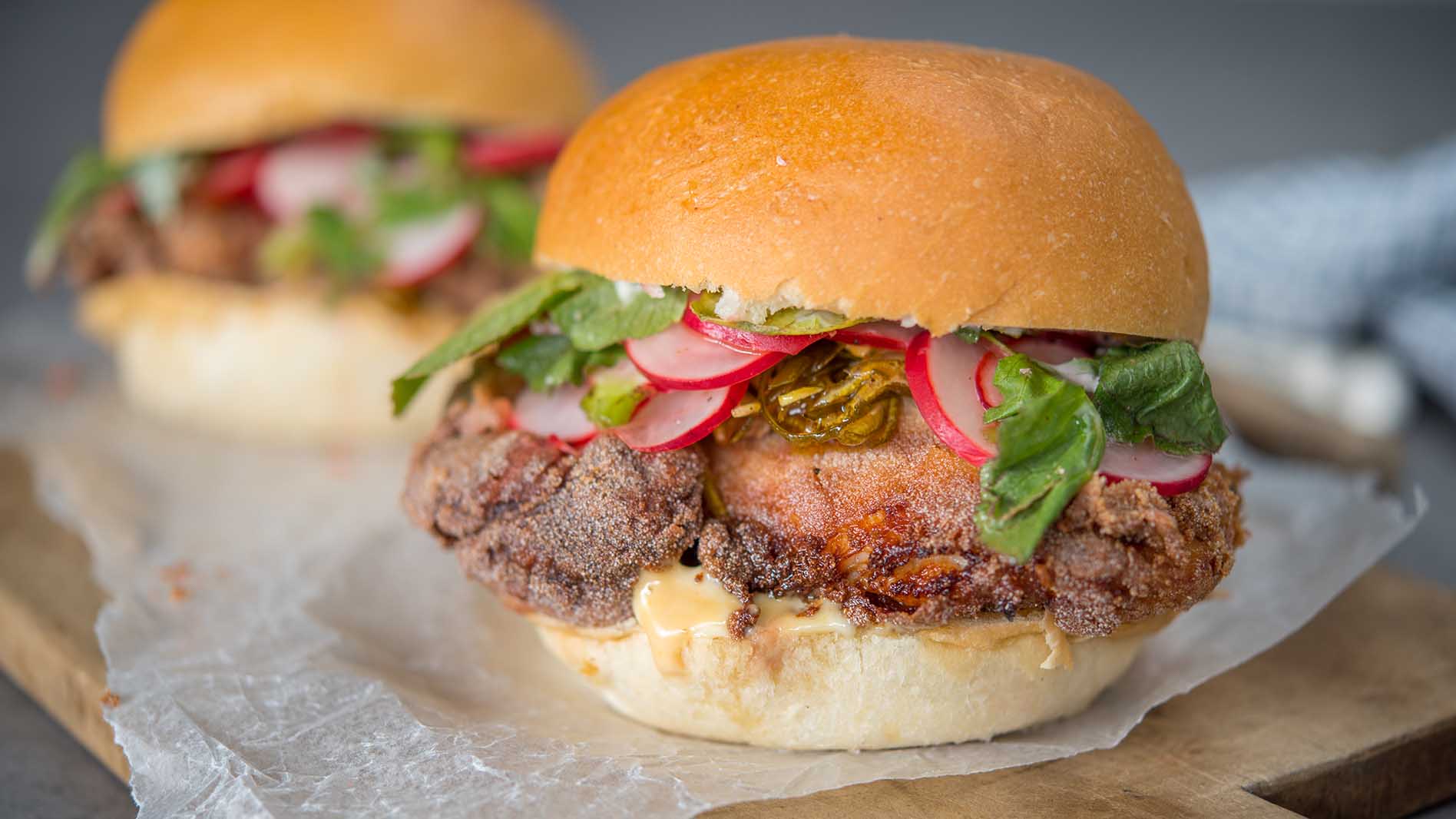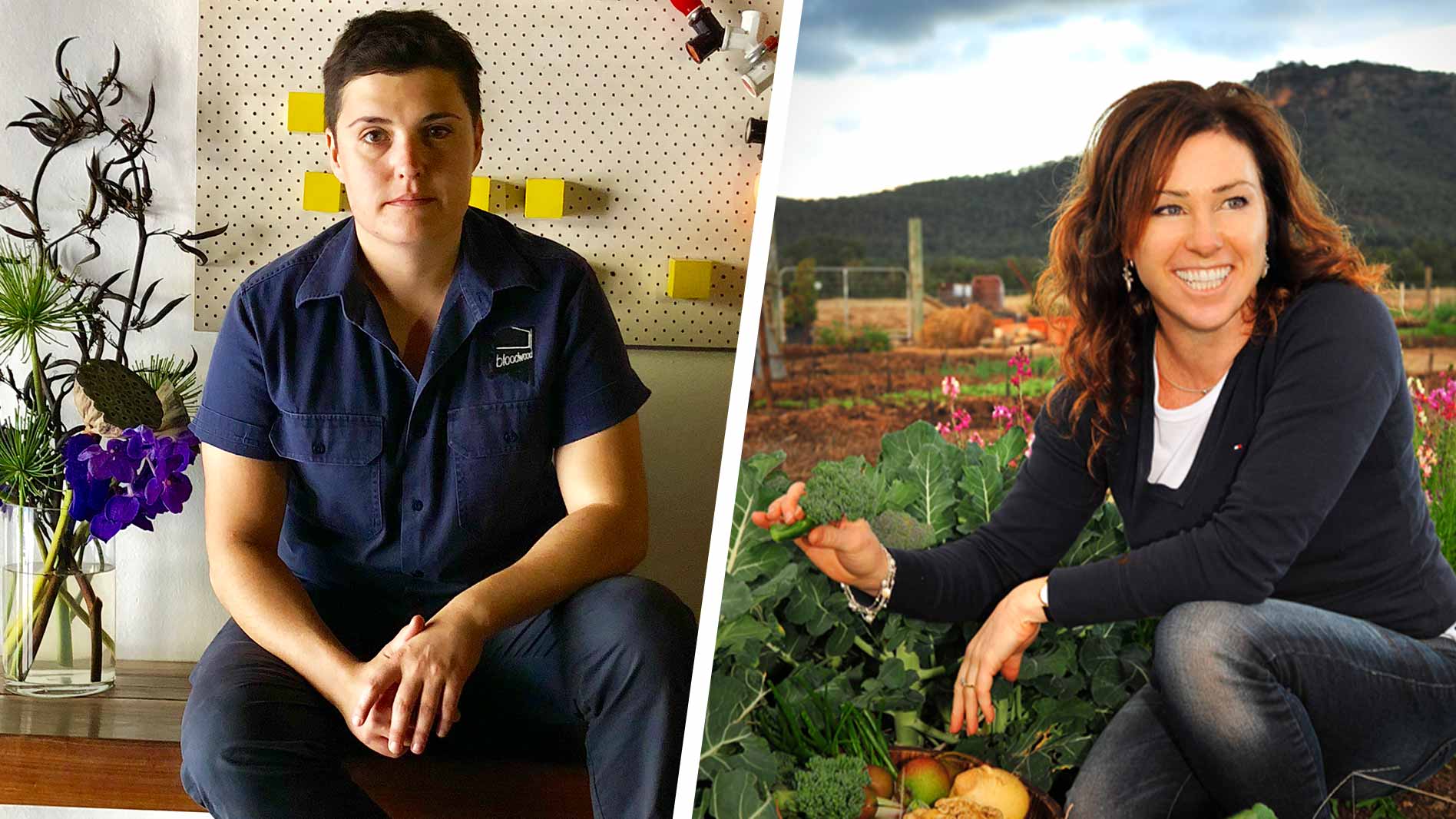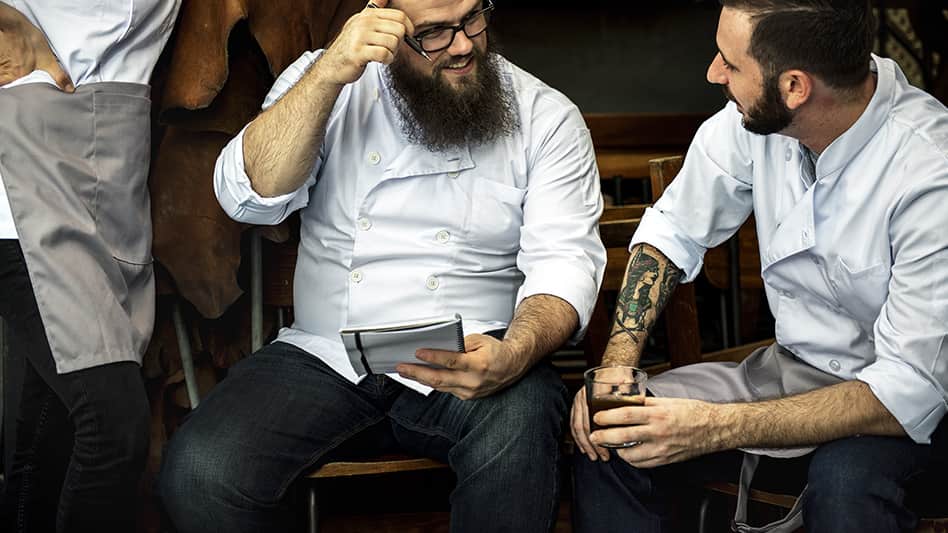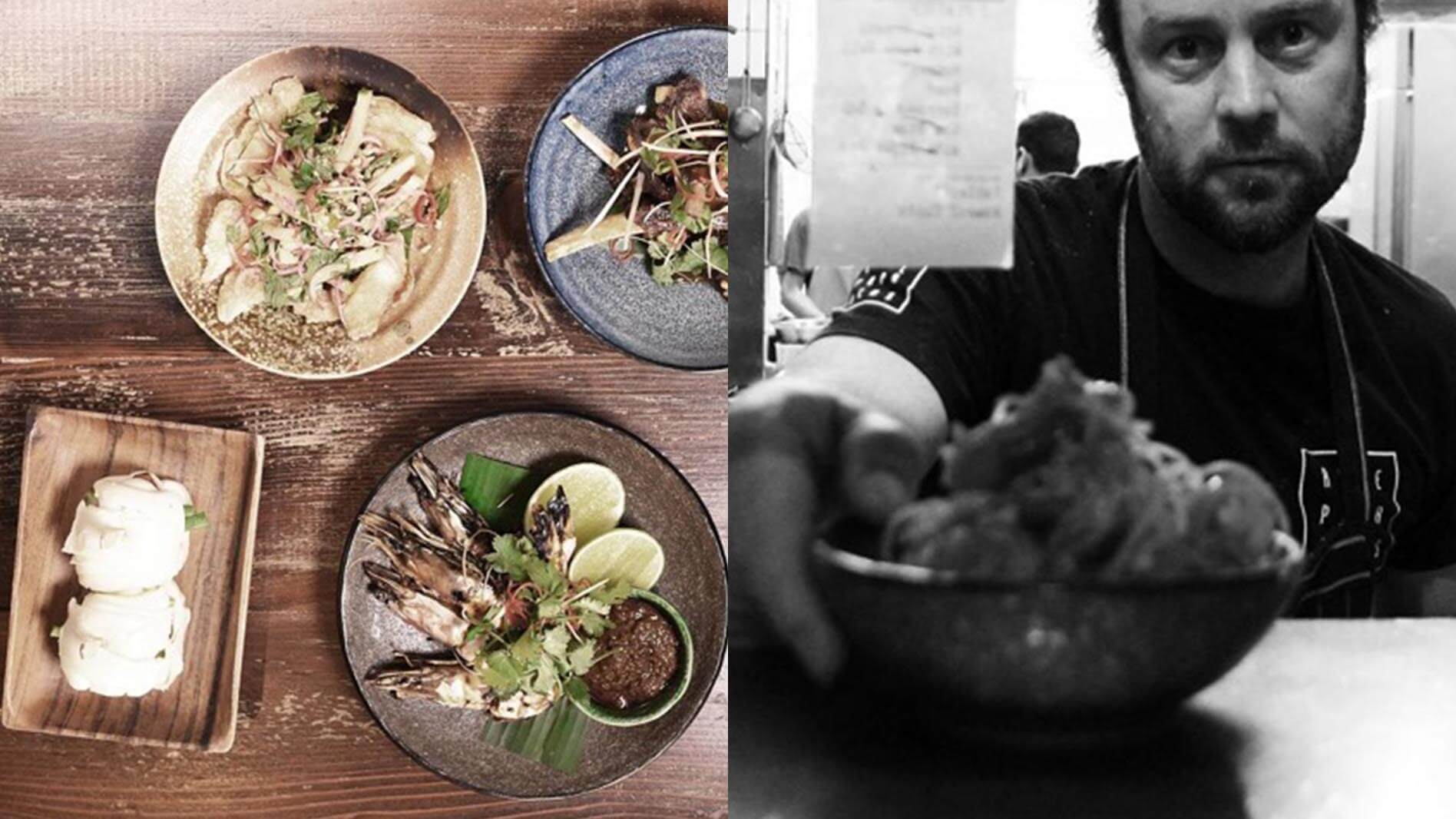Be inspired with recipes created by chefs.
Sign up for updates about products, special offers, news and promotional materials from Goodman Fielder.

Summary
Have you ever wondered where burgers originated from, and how we ended up with a wide variety of gourmet delights that we see today? From high quality gourmet burgers to the staple takeaway lunch option, here is how burgers have changed over the years.
Every year new food trends pop up and send chefs into overdrive as they work to incorporate them onto their already established menus. But these days, food trends can become irrelevant just as quickly, thanks to social media.
Think about it – within the last several years, fro-yo, fondue, deconstructed meals, and cloud eggs caught the attention of customers. Now, where are they?
In saying that, there has been one food trend that shook the Australian food service industry in 2016 and each year it just keeps getting bigger and bigger. Yep, it’s the big, juicy burger (or as the Americans call it, hamburger).
But when you think of the burger, would you really call it a trend considering it’s been readily available to customers since the 19th century? Why is it only now that customers can’t seem to get enough of it, resulting in burgers appearing on nearly every menu you cast your eye over?
Well, we think we’ve found the answer. Over the years, there has never been a menu item that has gone through the transformation journey like the burger – leaving customers curious and wanting more.
So, where do burgers come from?
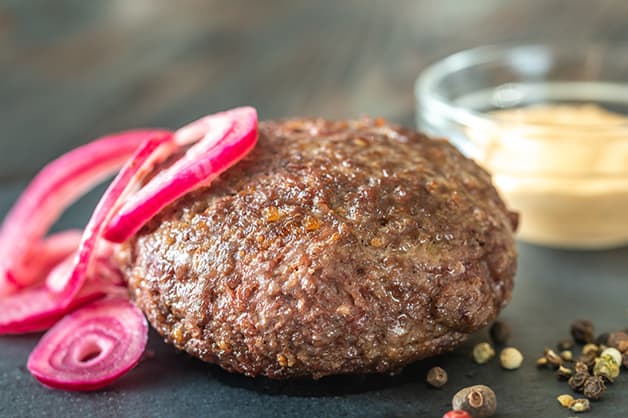
It may come as no surprise, but the world famous burger came to life in Hamburg, Germany – yep, the name gives it all away. Back in the 19th century, Hamburg steaks gained popularity amongst consumers thanks to the use of quality minced beef from German Hamburg cows.
Back then, Hamburg steaks were considered a gourmet offering due to the superiority of the beef, which was typically seasoned with garlic, onion, salt and pepper. Though at the time the meal was designed to be eaten with a knife and fork.
In the 1890s, Hamburg steaks moved across to the US and began popping up on food cart menus, but this time served on a slice of artisan bread. Though while many believe this was the beginning of the famous burger, it has been long contested. According to reports, the burger we all know and love came to full life in the 20th century, being traced back to Midwestern America.
The move from food carts to fast food vendors:
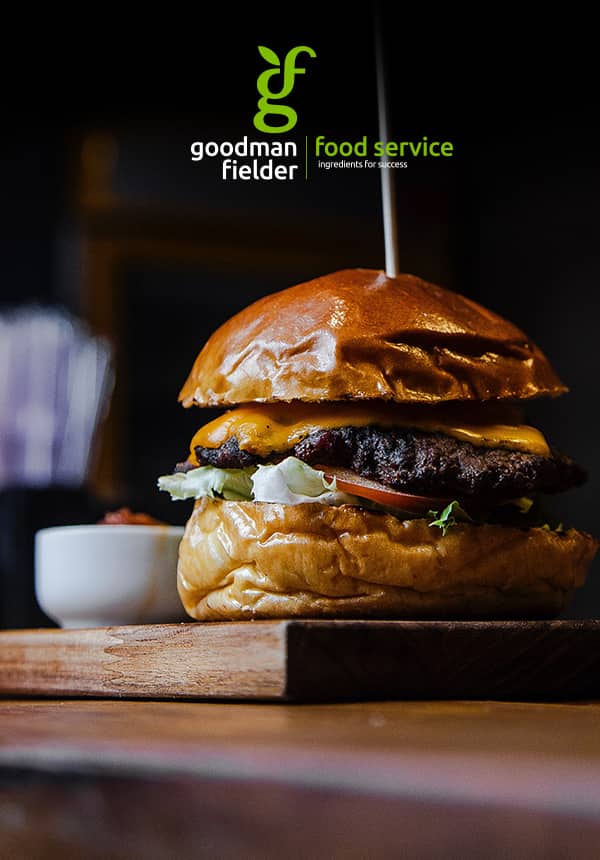
Want to find out how to make the perfect burger?
Find out what the experts do. This infographic will help you build the perfect burger.
When burgers gained traction in America in the 20th century, they were quickly picked up and tweaked to fit the fast food scene. In 1921, White Castle changed the concept of a burger forever with the creation of the traditional burger bun.
Following the introduction of the burger bun, the fast food outlet opened their first dedicated hamburger restaurant, kick-starting the fast food industry. And believe it or not, it took a further six years later until cheese made its way onto the burger, beginning the revolution of the cheeseburger.
Following close behind White Castle was fast food giant, McDonald’s who brought burgers to the forefront of western food culture. When introducing ‘one minute burger’ to their audience, they emphasised on the use of cheap produce and fast service.
Refusing to be left behind, Burger King introduced the now-famous, Whopper in 1957, marketing it as a meal in itself. When first put to menu, the bun was plain, but it was later changed to sesame seeded, then to a Kaiser roll and back to seeded, all to ensure there was a point of difference between them and McDonald’s.
And it may be surprising to some, but it wasn’t until 1960 that bacon became an added ingredient to burgers. Think about it, it took 40 years after the first burger hit menus for the greasy, salt-cured pork, which is now a crowd favourite, to be added to the dish.
1968 was the year of the Big Mac, which went on to become the world’s most famous burger. It’s a burger that is still one of McDonald’s biggest sellers, 52 years later.
The transition from fast food to gourmet burgers:
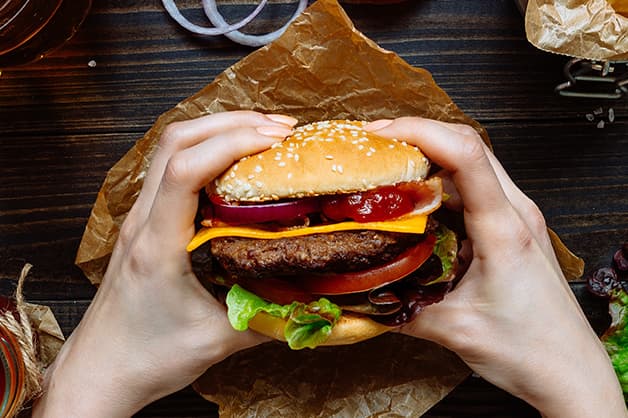
After years of being seen as the traditional fast food option, burgers transformed into a gourmet offering in the mid-2000s. The burger trend kicked off, with burger chains, gastropubs and bars appearing, not only in America but also Australia.
Thanks to the booming trend, gourmet burgers can now be found at hole-in-the-wall diners, drive through windows of fast food chains, five-star restaurants and everything in between. But it’s not just the style of venue that has changed along with the trend, so too have the ingredients used, with venues now turning to higher quality products and flavours.
Descriptions of burgers on menus have also changed with the inclusion of descriptive words to emphasis each ingredient. For example, the beef might be Angus or coarse ground, cheese may be Old English or Cheddar, buns can be a glazed milk bun or ciabatta and the standard fry could be hand cut or triple cooked.
Hatted Melbourne restaurant, Huxtable opened a burger shop in Collingwood named Huxtaburger in 2012, with their brand focusing on fresh, local ingredients. Renowned Australian chef Neil Perry followed suit, opening Burger Project as part of his popular Rockpool Bar & Dining empire.
At the time, the celebrity chef wrote on his website: “Burger Project was born from the same love of fresh, sustainably-sourced ingredients. We worked hard to find local ingredients; partnering with incredible suppliers and producers who care just as much as we do. Our entire menu is made in-house daily, from each hand-rolled, 100%, grass-fed, beef patty, to the sauces for your crispy chips, and the delicious, creamy thick shakes and soft serve.”
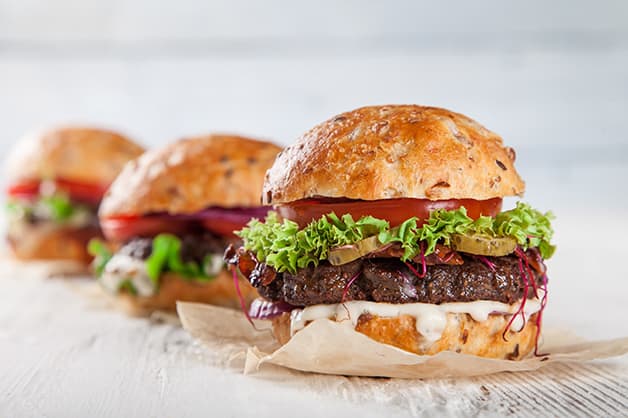
Along with the use of quality ingredients also came the opportunity for customers to gain the power and decide what is placed between their bun of choice – Welcome to the build your own burger model.
McDonald’s was first to launch this concept in Australia in 2014 but scrapped the model 12 months later. Despite the fast food giant switching their approach, many local burger joints continued to execute within their locations.
Still today, Bar Luca in Sydney offers their customers the opportunity to switch or add ingredients to a base burger option on their menu. To ensure every tasty desire is covered, they have 25 ingredients add ons, ranging from gluten free low carb keto bun, deep fried mozzarella patty and crunchy peanut butter.
Along with the option of customers self-creating the burger they desire, the trend of weird and wacky toppings continues to rise in popularity amongst burger-focused venues and customers willing to indulge in them. Burger franchise Milky Lane even tested out a butter chicken burger!
The Indian-inspired burger consisted of fried chicken coated in butter chicken paste, crushed poppadoms, cheesy garlic naan fingers, coconut vindaloo sauce, mint yoghurt aioli, mango chutney, and cucumber. So, yep, it looks like nothing is off limits when it comes to trying to stick out from the crowd.
Moreover, as Australia’s plant-based meat industry grew significantly over the last few years, meat-free burgers have also become a thing with burger chains like Grill’d switching two of its restaurants to 100% meat-free. Plantry makes such switching or adding to your menu a lot easier with their ready-to-cook plant-based range. From meats like burger patties to sauces like mayo, this brand provides an all-in-one solution to venues.
Conclusion:
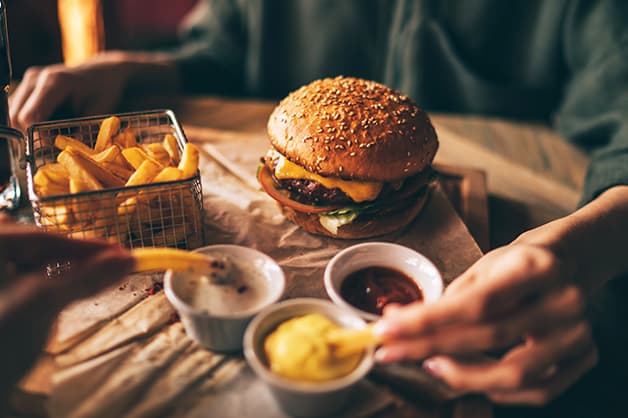
So, it’s no secret burgers have been transformed over the years. When you look back, burgers have gone from a piece of meat on a slice of bread, to a beef patty on a roll, to the addition of cheese and bacon to even surpassing meat altogether – now, it’s whatever you wish!
Despite the concept being over 130-years-old, each year, burgers continue to provide customers with a mouth-watering experience, while giving chefs the ability to experiment with new flavour combinations and ingredients. And as long as they continue to be ‘Instagramable’ and customers keep craving them, burgers (and dedicated burger bars) are here to stay.
Related Ideas
16th February 2023
The Best Buns For Your Burgers REVEALED!
Burgers are no longer all about the juicy patty and thick sauces. These days, they are all about which bun works best. So, we sat down with the experts to find out which bun is the winner!
18th May 2022
Chicken Karaage Burger with Spicy Mayonnaise
Chef Rory has revealed the steps to his delicious Karaage Chicken Burger recipe in great detail. Perfect as a dine in option or for takeaway, add it to your menu today.
10th May 2022
How Burgers Have Become Australia’s Menu Must-Haves
After becoming a booming industry in Australia, we sat down and spoke to the experts to find out what makes a great American-inspired burger!

